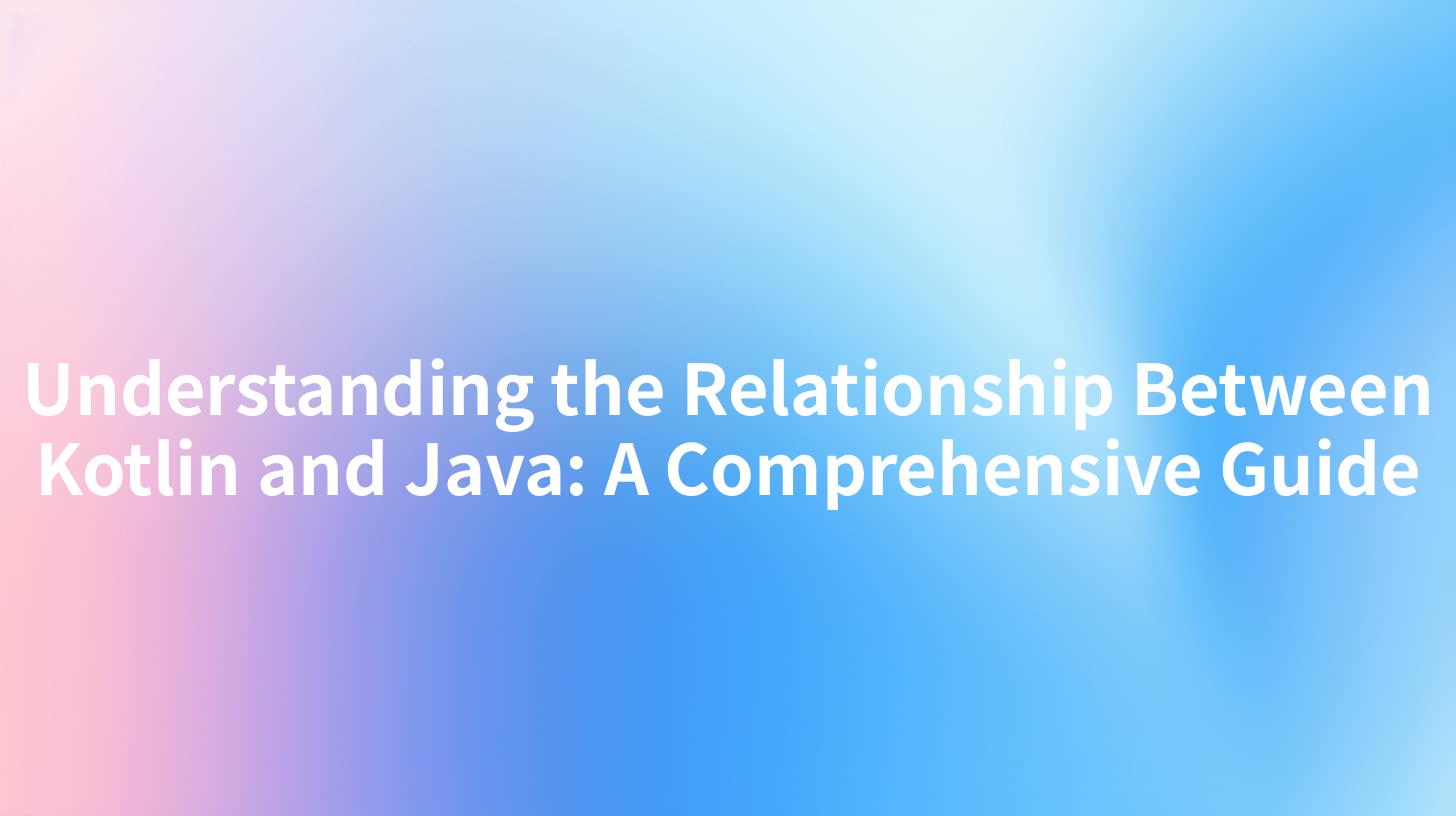Understanding the Relationship Between Kotlin and Java: A Comprehensive Guide

Understanding the Relationship Between Kotlin and Java: A Comprehensive Guide
Introduction
In the ever-evolving world of programming languages, Kotlin has emerged as a modern alternative to Java. For developers entrenched in the Java ecosystem, understanding the relationship between Kotlin and Java is crucial to leveraging both languages effectively. This comprehensive guide unpacks the significance of Kotlin in the Java landscape, its interoperability with Java, and tips for transitioning to Kotlin for enterprise solutions, especially in environments focused on AI usage, like the Adastra LLM Gateway.
The Historical Context of Kotlin and Java
Java has been a staple in the programming world since its inception in the mid-1990s. Its design built on principles of object-oriented programming has made it a robust choice for enterprise applications. Conversely, Kotlin, developed by JetBrains in 2011, was designed to address some of the shortcomings inherent in Java. By incorporating modern programming paradigms, Kotlin not only provides a streamlined syntax but also enhances developer productivity.
Table 1: Key Differences Between Kotlin and Java
| Feature | Java | Kotlin |
|---|---|---|
| Null Safety | Manual checks required | Built-in null safety |
| Type Inference | Explicit type declaration | Smart type inference |
| Functional Programming Support | Limited | Full support |
| Extension Functions | Not available | Available |
| Interoperability | N/A | Fully interoperable |
Interoperability: Bridging Kotlin and Java
One of the most compelling reasons for using Kotlin lies in its seamless interoperability with Java. Developers can freely call Kotlin code from Java and vice versa, which allows for gradual migration of existing Java codebases to Kotlin without discarding the investments made in Java.
Example of Interoperability
Here’s a simple example showcasing how Kotlin code can be accessed from Java:
// Kotlin file: Greeting.kt
fun greet(name: String): String {
return "Hello, $name!"
}
In Java, this can be called as follows:
// Java file: Main.java
public class Main {
public static void main(String[] args) {
String greeting = GreetingKt.greet("World");
System.out.println(greeting);
}
}
This interoperability not only eases the transition but also allows enterprises to incorporate AI services into their Java applications gracefully.
Kotlin: Empowering Enterprises with AI
Since many organizations are now integrating AI technologies, leveraging Kotlin can result in more secure and efficient applications. For instance, when implementing AI solutions using the Adastra LLM Gateway, Kotlin’s concise and expressiveness can enhance the development process.
AI Services with Kotlin
When integrating AI services, organizing and routing API calls is crucial. With the alignment of OpenAPI standards and Routing Rewrite techniques, Kotlin can facilitate robust API management. In conjunction with services like APIPark, organizations can streamline their AI services workflow.
Sample API Call using Kotlin
Here is a Kotlin code snippet that makes a call to an AI service:
import okhttp3.OkHttpClient
import okhttp3.Request
import okhttp3.Response
fun callAIService(token: String): String {
val client = OkHttpClient()
val request = Request.Builder()
.url("http://host:port/path")
.addHeader("Authorization", "Bearer $token")
.addHeader("Content-Type", "application/json")
.build()
val response: Response = client.newCall(request).execute()
return response.body?.string() ?: "Error"
}
How Kotlin Enhances Enterprise Security
With increasing concerns over data breaches and application vulnerabilities, security features in programming languages play a vital role in enterprise applications. Kotlin’s inherent null safety and the option of defining immutable data types help in reducing the likelihood of common errors that lead to security issues. For enterprises using AI, ensuring secure access and usage of AI services is paramount.
The Future of Kotlin and Java
As the demand for modern applications continues to grow, the symbiosis of Kotlin and Java is likely to flourish. Kotlin's rise as a preferred language for Android development, coupled with its growing adoption for back-end development, indicates a bright future.
Transitioning from Java to Kotlin
Developers seeking to transition from Java to Kotlin can utilize various resources, including:
- Online courses: Many platforms offer courses on transitioning from Java to Kotlin.
- Official Kotlin documentation: A comprehensive guide on syntax and interoperability features.
- Community resources: Engaging in developer forums and communities can provide invaluable peer support.
Conclusion
Understanding the relationship between Kotlin and Java is vital for developers and organizations wanting to stay relevant in today’s technology landscape. By harnessing the strengths of both languages, particularly in the context of emerging technologies like AI, enterprises can deliver secure, efficient, and innovative applications. Leveraging tools such as the Adastra LLM Gateway within a well-defined OpenAPI structure while adopting Kotlin leads to optimized results.
APIPark is a high-performance AI gateway that allows you to securely access the most comprehensive LLM APIs globally on the APIPark platform, including OpenAI, Anthropic, Mistral, Llama2, Google Gemini, and more.Try APIPark now! 👇👇👇
As both languages continue to evolve, the collaboration between them will undeniably crop up new opportunities and challenges alike. Through continuous learning and adaptation, developers can navigate this intricate landscape, ensuring that their enterprise applications are not only modern and dynamic but also secure for future challenges.
References
- JetBrains. (2023). Kotlin Programming Language.
- APIPark Documentation
- Adastra LLM Gateway Documentation.
This guide serves as an essential resource for developers who aspire to leverage both Kotlin and Java effectively in their software development endeavors. Whether it is for enterprise-grade applications or integrating AI technologies, understanding the synergy between these two languages is critical for success in contemporary programming.
🚀You can securely and efficiently call the OPENAI API on APIPark in just two steps:
Step 1: Deploy the APIPark AI gateway in 5 minutes.
APIPark is developed based on Golang, offering strong product performance and low development and maintenance costs. You can deploy APIPark with a single command line.
curl -sSO https://download.apipark.com/install/quick-start.sh; bash quick-start.sh

In my experience, you can see the successful deployment interface within 5 to 10 minutes. Then, you can log in to APIPark using your account.

Step 2: Call the OPENAI API.


